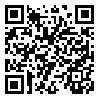Volume 4, Issue 9 (2016)
CFL 2016, 4(9): 61-81 |
Back to browse issues page
Download citation:
BibTeX | RIS | EndNote | Medlars | ProCite | Reference Manager | RefWorks
Send citation to:



BibTeX | RIS | EndNote | Medlars | ProCite | Reference Manager | RefWorks
Send citation to:
Hajiyani F, Sayyadkuh A, Hashemi Ghalati E. Persian storyteller's scrolls (Tumars) and folkloric motif. CFL 2016; 4 (9) :61-81
URL: http://cfl.modares.ac.ir/article-11-4174-en.html
URL: http://cfl.modares.ac.ir/article-11-4174-en.html
Abstract: (9490 Views)
The study of Persian storyteller's scrolls (Tumārs) as written documents of Iranian epic tradition, is sometimes difficult due to their massive volumes and intricate stories. However, dividing these texts into their elements facilitates inter-textual analyses. With the use of the global motif-index of folk literature, a framework will be shaped to index motifs for Tumārs. This motif-index enables easier access to each motif in different narratives, rooting the motifs and analysis of development, evolution, influences and survival of each motif in different eras as well as comparative studies of narratives. This index also will facilitate a basis for analytical and stylistic study of Tumārs according to their motifs. The purpose of this article is to show the consistency of global motif-index with Persian folk tales especially epic tales and a kind of text analysis with this pattern. By indexing motifs of Rostam's seven labors in Haft lashkar, this paper aims to show that the framework of motif-index is consistent with Persian folk narratives and by analyzing the motifs of this tale, some little characteristics of Persian Tumārs are shown. Hence, it highlights the richness of Iranian folk literature and tradition by adding new motifs to the global index. This kind of indexing can be used as a framework for all Persian folktales to manage all those massive stories and for easier access to their contents.
Received: 2015/07/4 | Accepted: 2016/05/17 | Published: 2016/07/22
| Rights and permissions | |
 |
This work is licensed under a Creative Commons Attribution-NonCommercial 4.0 International License. |







